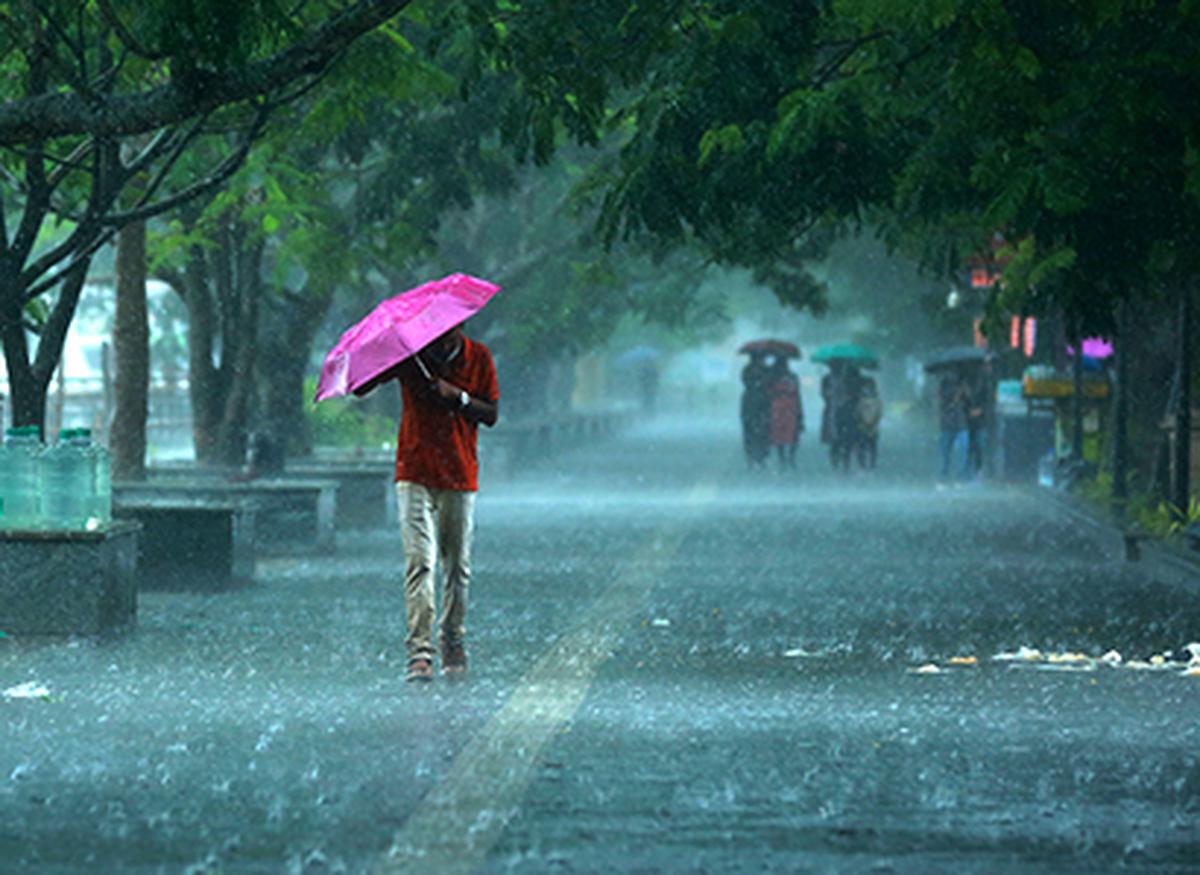News Highlight
Monsoon rainfall in India has been surplus by around 7% this year, despite extreme inequity.
Key Takeaway
- Since 2019, the monsoon in India has returned surpluses, barring a slight dip last year.
The southwest monsoon
- It is the rainy season that lasts from June to September. The Southwest Monsoon is the Indian subcontinent’s primary rainy season. The southwest monsoon takes over the country during the summer monsoon season. During this time, the country receives nearly 75% of its annual rainfall.
Are monsoon patterns changing?
- June-September rainfall in 2019 was 10% more than the 88 cm that India usually gets.
- Central and southern India saw a sharp surge in rainfall.
- Rains in Central India were surplus by 20% and in southern India by 25%, with the last month seeing several instances of flooding in Kerala, Karnataka and Madhya Pradesh.
- The east and northeast of India have reported a 17% shortfall, and the northwest 2%.
What led to excessive rains in southern and central India?
- The ‘triple dip’ La Nina:
- La Nina is a phenomenon that describes cooler than average ocean surface temperatures in the Eastern and Central Pacific Oceans, regions close to the equator off the west coast of South America.
- India is seeing an extended spell of the La Nina, called a “triple dip La Nina”, a phenomenon lasting across three winter seasons in the northern hemisphere.
- This is only the third time since 1950 that a triple-dip La Nina has been observed.
- This, in part, is why, for the third year in a row, India is seeing surplus rain in September, a month that usually marks the retreat of the monsoon.
Factors Influencing the South-West Monsoon Formation
- The differential between heating and cooling:
- The differential heating and cooling of land and water creates low pressure on the landmass of India while the seas around it experience comparatively high pressure.
- The Inter Tropical Convergence Zone (ITCZ):
- The shift of the position of the Inter Tropical Convergence Zone (ITCZ) in summer over the Ganga plain.
- ITCZ is the equatorial trough that is usually positioned about 5° north of the equator. It is also known as the monsoon trough during the monsoon season.
- The high-pressure area:
- The presence of the high-pressure area east of Madagascar, approximately 20°S over the Indian Ocean. The intensity and position of this high-pressure area affect the Indian Monsoon.
- The westerly jet stream:
- The movement of the westerly jet stream to the north of the Himalayas and the presence of the tropical easterly jet stream over the Indian peninsula during summer.
Onset of the South-West Monsoon
- The Southwest monsoon typically sets in over Kerala around 1st June. It advances northwards, usually in surges, and covers the entire country around July 15th.
Branches of the South West Monsoon
- Beyond the south of Kerala, monsoon winds split into two branches:
- The Arabian Sea branch.
- The Bay of Bengal branch.
- The Arabian Sea branch:
- The Arabian Sea branch moves northwards gradually. By the 10th of June, it will have arrived in Mumbai.
- The Bay of Bengal branch:
- The Bay branch is deflected westward by the Himalayan barrier as it approaches the Himalayan foothills and advances up the Gangetic plain.
- The two branches come together to form a single current, mostly around Delhi.
- Both branches arrive in Delhi at roughly the same time.
Retreating Monsoon Season
- The retreating southwest monsoon season is marked by clear skies and a temperature rise.
- While day temperatures are high, nights are cool and pleasant. The land is still moist. Owing to the high temperature and humidity conditions, the weather becomes rather oppressive during the day. This is commonly known as the ‘October heat’.
- In the second half of October, the mercury begins to fall rapidly, particularly in northern India.
- The weather in the retreating monsoon is dry in North India, but it is associated with rain in the eastern part of the Peninsula. Here, October and November are the rainiest months of the year.
- The widespread rain in this season is associated with the passage of cyclonic depressions, which originate over the Andaman Sea and manage to cross the eastern coast of the southern Peninsula. These tropical cyclones are very destructive.
- The bulk of the rainfall on the Coromandel Coast is derived from these depressions and cyclones.
Significance of the Southwest Monsoon Season.
- Over half of India’s farmland is irrigated by the southwest monsoon.
- During the monsoon season, India receives roughly 70% of its annual rainfall, which impacts the yield of some key Kharif or summer crops like rice, pulses, and oilseeds like soybeans.
- Cotton, maise, paddy, soybean, groundnut, bajra, and sesame are some of the most important crops that rely on monsoon rains.
- In India, dairy farms rely on the Southwest Monsoon to keep their cows healthy and well-fed.
Pic Courtesy: The Hindu
Content Source: The Hindu



